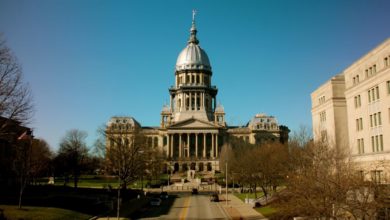Many people have heard of the $1 trillion student loan debt crisis–the second largest debt category behind only mortgage debt. Few have heard of another kind of debt squeezing students and their families–student “lunch debt!”
In another absurd feature of life under capitalism, K-12 students are not guaranteed free nutritious meals as part of daily educational services even though child nourishment is just as important to learning as textbooks and teachers. As a result, working class households across the United States are racking up debt because of unpaid student lunches.
Median meal debt per school has grown to $2,500. Three-quarters of all school districts report that students have unpaid lunch debts. The larger the school district, the larger the student lunch debt, with many districts accruing debt worth tens or hundreds of thousands of dollars. In the middle of the 2018/2019 school year, Boulder Valley School District in Colorado reported that families owed a staggering $230,000 in unpaid meal debt, five times the national average for a district that size.
This is how it works. The United States Department of Agriculture administers the National School Lunch Program, which provides lunch to 31 million children each day. Some 22 million of these students receive free or reduced-price lunches, most because they come from families that fall near or below the federal government’s absurdly low poverty threshold–currently $25,100 for a family of four. Many households earn just enough income not to qualify for free or reduced-price lunches, but are still so economically insecure that they cannot afford to pay for something as basic as school lunches. Most schools are not permitted to let students starve, and must provide some kind of food whether it is paid for or not. That’s when unpaid lunch bills materialize, and begin to pile up on the shoulders of parents and families.
Boulder’s problem is particularly bad because housing costs and rent are astronomically high and eat away a disproportionate amount from the average household’s already stagnant wages. An average two bedroom apartment in Boulder costs just over $2,000 a month.
Immigrant families are more likely to fall prey to this bizarre kind of food debt that few will ever be able to pay back once it begins accumulating. Not only do immigrant families disproportionately experience poverty, but they are wary of applying for federal assistance programs like free and reduced-price lunch in the first place due to fear of retaliation by Immigration and Customs Enforcement. Children that experience stress due to the ever-present threat of family separation have that stress cruelly compounded by malnutrition, creating enormous barriers to school success.
According to the CDC and No Kid Hungry, well-fed children do better in school. Students who eat meals that are more nutritious have higher rates of academic success. Many children depend on schools to offer healthy food, with poor students often receiving at least two meals at school. No Kid Hungry and other advocates point to free, school-based meal options as a central component of a healthy learning environment. However, as per pupil funding has fallen dramatically across the country, school districts are scrambling to find ways to feed their students within shrinking budgets.
In order to recover costs and collect on delinquent lunch debts, some school districts from as far and wide as Rhode Island, Ohio, Texas, Oregon and beyond have resorted to hiring debt collection agencies to track down indebted families, in some cases reporting them en mass to credit rating agencies to damage their credit scores.
In the Boulder Valley School District, one mother, Kate Lacroix, started a crowdfunding campaign to try and clear the debt. Her heroic effort raised nearly $50,000–about one quarter of the total debt–garnering widespread national media attention.
The corporate media mainly treated Kate Lacroix’s campaign as a “feel good” or “human interest story” for the entertainment and emotional satisfaction of readers, rather than evidence of a national crisis of child malnutrition and another front in the battle against student debt. The corporate “human interest” presentation wants to induce the reader to believe, mystically, that charitable giving will be the solution to a cumulative lunch debt crisis now worth tens or hundreds of millions of dollars (the exact tally is unknown).
While expressing hollow admiration for Lacroix and other courageous community members providing mutual assistance to struggling families, entertainment news corporations do not actually question why in the midst of abundance, nutritious meals are not guaranteed free to all K-12 students (like books and desks) when they easily could be.
In spite of the corporate presentation, charity is not a sustainable solution to the lunch debt crisis any more than soup kitchens have been a sustainable solution to hunger and malnutrition under capitalism.
Under a socialist system, food and education would no longer be luxuries or sources of debt, but guaranteed social rights. Student lunch debt, like student debt in general, would be wiped out, and the food industry would harnessed to make sure that every student across the country had access to free and nutritious meals as an integral part of the education they receive in every public school.





